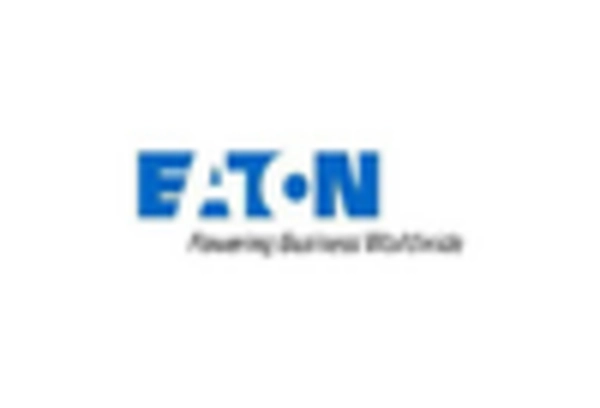Rising Focus on Grid Modernization
The modernization of the electrical grid in the US is a critical driver for the fault current-limiter market. As utilities invest in upgrading aging infrastructure, the need for advanced protection systems becomes evident. Fault current limiters play a vital role in enhancing the resilience of the grid by preventing equipment damage during fault conditions. The fault current-limiter market is expected to benefit from the projected $100 billion investment in grid modernization initiatives over the next decade. This investment is likely to create a favorable environment for the adoption of fault current limiters, as utilities prioritize safety and reliability in their operations.
Regulatory Compliance and Standards
Regulatory compliance and the establishment of safety standards are driving the fault current-limiter market in the US. As regulatory bodies implement stricter guidelines for electrical safety, utilities are compelled to adopt fault current limiters to meet these requirements. The fault current-limiter market is experiencing growth as companies strive to comply with evolving regulations. This trend is expected to accelerate, particularly with the introduction of new standards aimed at enhancing grid reliability and safety. It is projected that compliance-related investments in fault current-limiting technologies could account for up to 30% of the market growth in the coming years, as organizations prioritize adherence to safety regulations.
Increased Awareness of Electrical Safety
There is a growing awareness of electrical safety among utilities and industrial operators in the US, which is positively impacting the fault current-limiter market. As incidents of electrical faults can lead to catastrophic failures and safety hazards, organizations are increasingly adopting fault current limiters as a preventive measure. The fault current-limiter market is witnessing a shift in mindset, where safety is prioritized alongside operational efficiency. This trend is likely to drive market growth, as companies recognize the long-term benefits of investing in fault current-limiting technologies. It is estimated that the market could expand by 15% annually as safety regulations become more stringent.
Growing Demand for Renewable Energy Sources
The increasing shift towards renewable energy sources in the US is driving the fault current-limiter market. As more solar and wind energy projects are developed, the need for reliable protection against fault currents becomes paramount. Renewable energy systems are often connected to the grid, which can lead to complex fault scenarios. The fault current-limiter market is likely to see a surge in demand as utilities and energy providers seek to enhance grid stability and reliability. According to recent estimates, the integration of renewable energy could increase the demand for fault current limiters by approximately 25% over the next five years. This trend indicates a significant opportunity for manufacturers and suppliers in the fault current-limiter market.
Technological Innovations in Protection Systems
Technological innovations in protection systems are significantly influencing the fault current-limiter market. The development of advanced materials and smart technologies is enhancing the performance and reliability of fault current limiters. These innovations allow for faster response times and improved fault detection capabilities, which are crucial for modern electrical systems. The fault current-limiter market is likely to see increased adoption of these advanced solutions, as utilities seek to enhance their operational efficiency. Market analysts suggest that the introduction of smart fault current limiters could lead to a 20% increase in market penetration over the next few years, as utilities aim to leverage technology for better grid management.

















Leave a Comment